P-47D-25-RE Thunderbolt
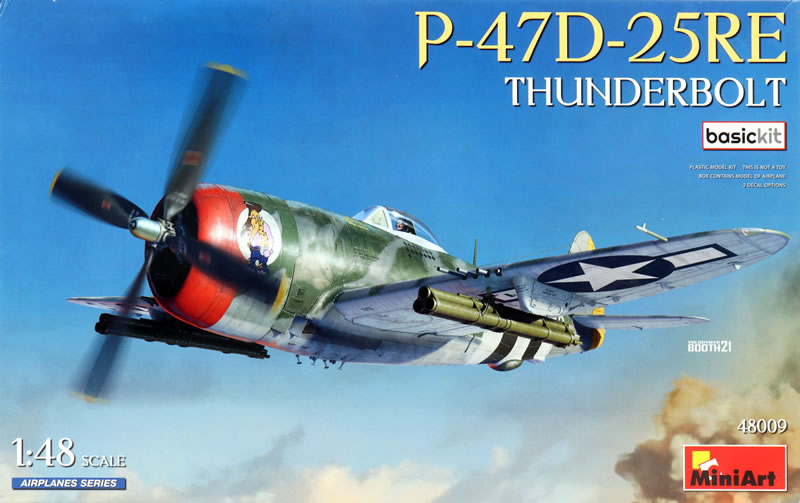
MiniArt, 1/48 scale
S
u m m a r y |
| Catalogue Number: |
MiniArt Kit No. 48009 - P-47D-25-RE Thunderbolt |
| Scale: |
1/48 |
| Contents and Media: |
220 parts in grey plastic; six parts in clear; markings for two aircraft. |
| Price: |
GBP £39.99 EU Price (£33.33 Export Price) plus shipping available online from Hannants |
| Review Type: |
FirstLook |
| Advantages: |
Restrained surface textures including recessed panel lines and rivets; accurate shapes; high level of detail; useful options including poseable control surfaces, large amount of ordnance and tanks, weighted and unweighted landing gear legs and tyres, alternative tyre tread patterns and wheel hubs, choice of open and closed cowl flaps, optional position supercharger vents; good quality decals; thin and clear transparencies. |
| Disadvantages: |
Assembly sequence for aerial mast; corrugated floor should be flat. |
| Conclusion: |
MiniArt has made a big splash with their first 1:48 scale aircraft release.
Their P-47D-5-RE is highly detailed, looks accurate, features state-of-the-art surface textures, clever engineering and thoughtful options.
I'm looking forward to seeing where MiniArt goes next! |
Reviewed by
Brett Green

The Republic P-47 Thunderbolt was the biggest and most heavily armed single-seater fighter of the Second World War.
Top speed and diving capability were impressive thanks to its powerful Pratt & Whitney R-2800 engine and exhaust driven turbosupercharger. Indeed, the P-47 was capable of approaching the sound barrier in a dive.
Its robust design and huge radial engine also meant that the Thunderbolt could absorb an enormous amount of punishment. This was particularly important on dangerous ground attack missions. A stray bullet in the cooling system of a Spitfire or Mustang could bring down these in-line powered aircraft with frightening speed, while there are stories of P-47s returning safely to their airfields with entire cylinders blown off the big Pratt & Whitney radial engine.
On the other hand, the portly lines of the P-47 were hardly as glamorous as some of its sleeker counterparts such as the P-51. Indeed, the Thunderbolt was often referred to as the “Jug”. It has been suggested that this nickname was attributed either due to the P-47’s resemblance to a milk jug; or as an abbreviation for “Juggernaut”. Both explanations are equally fitting.

The P-47’s size and speed did create some problems. The Thunderbolt was thirsty. Its high fuel consumption meant that early versions of the P-47 could not escort Allied bombers all the way to their targets deep within the Third Reich, resulting in high bomber losses during daylight raids over Germany.
The Thunderbolt’s stability and top speed were appreciated, but climb and turning performance were inferior to its Allied and German contemporaries. The P-47’s weight and power combined to bestow astonishing acceleration in a dive. However, the Jug became dangerously unresponsive when approaching supersonic speeds. The control surfaces would lock up due to compressibility effect, resulting in a disturbing number of fatal plunges to earth. This problem was addressed in later P-47 variants with the addition of small flaps beneath the wings that countered the compressibility effect.
The heavyweight Jug also needed particularly long runways for take-off and landing.
Despite the demands set by this huge and homely fighter, its ability to deliver a telling blow to targets in the air or on the ground, and its rugged survivability even after sustaining major damage, made the Republic P-47 Thunderbolt a favourite of many WWII fighter pilots.
P-47D-25
The P-47D-25 saw a dramatic change to the profile of the Thunderbolt with the first “bubbletop” canopy installed behind a redesigned windscreen on a cut-down rear fuselage.
Development of the P-47D continued. Fuel capacity increased, ailerons were redesigned, new propellers fitted and a small set of compressibility flaps was installed behind the undercarriage bay from the P-47D-30. The P-47D-40 permitted the fitting of five zero-length rocket stubs under each wing, and a small fillet was installed in front of the fin to improve directional stability. This fin was often retrofitted to P-47D-30 variants too.
The cockpit also evolved. Flat panels replaced the distinctive corrugated floor, probably as early as the P-47D-25 variant onwards.
More than 12,000 P-47Ds were eventually produced.
MiniArt is best known for its highly detailed military vehicle kits and figure sets, but they have dramatically diversified to release their first WWII model aeroplane.
And so to the inevitable question, do we really need another bubbletop P-47D Thunderbolt in 1/48 scale? I think the answer is "why not"?
Tamiya released their 1/48 scale Thunderbolts more than 20 years ago (see my 2003 review) and they have undeniably dominated the Jug market ever since. Even so, there is certainly room for a new P-47D that meets the detail expectations of the 2023 modeller.
MiniArt's 1/48 scale P-47D-25-RE Thunderbolt is delivered in a stout top-opening cardboard box. Underneath the lid we are presented with 220 parts in grey plastic, six parts in clear plastic and markings for two aircraft. This release is labelled "basickit" - no photo-etch or resin here - but there is nothing basic about the plastic parts.
220 parts may seem high for single-engine fighter (Tamiya's kit as well as the new Dora Wings P-47s both have around 120 parts in total) but consider that more than 70 of these are stores, many of which will not be used. Plenty of optional parts will be staying on the sprues too, so there is not that big a difference.
Surface texture is smooth with a pleasing combination of crisply recessed panel lines and rows of subtle rivets. The rivets are finer than the panel lines and in places there seems to be the hint of a rippled oil-can effect. the surface texture is subtle enough that it should not be a distraction from the overall shape of the aircraft even under a shiny coat of metallic paint.
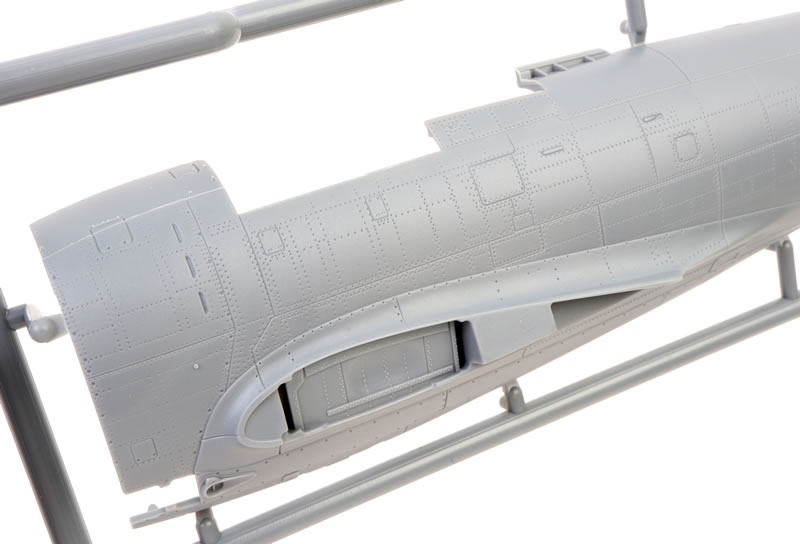
Moulding quality is very good. I haven't found any imprefections on surfaces that will be visible on the finished model.
The cockpit is highly detailed. I particularly like the seven-part pilot's seat with harness straps cleverly moulded in place.
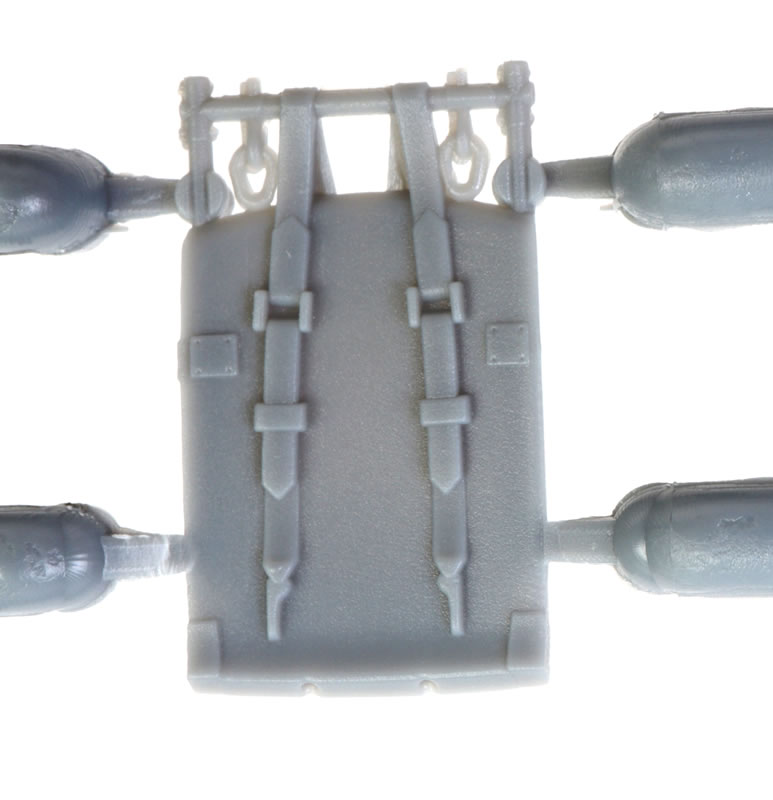
The sidewalls look fabulous with wiring and small details present.
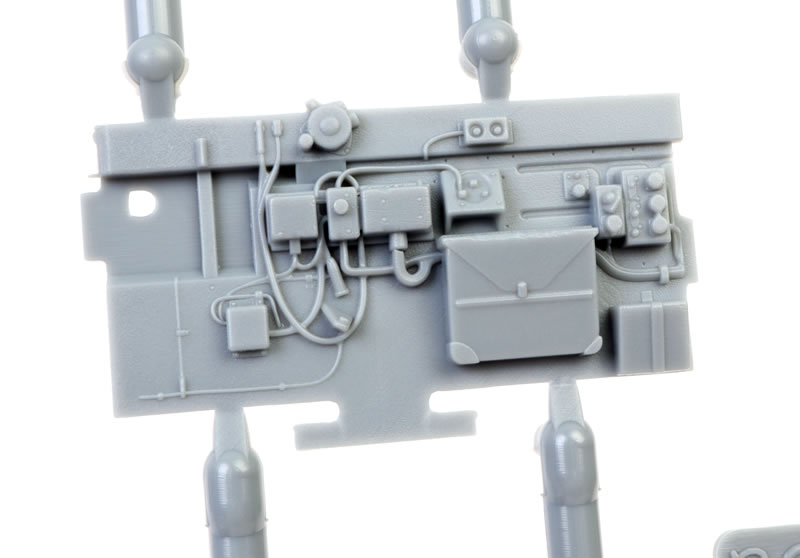
The floor is corrugated, which is incorrect for a P-47D-25. The floor should be flat from the P-47D-25 variant onwards.
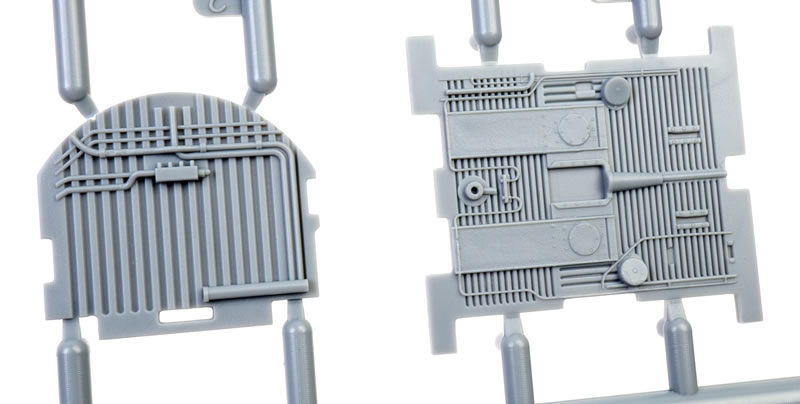
The plastic instrument panel looks a little bland to my eye, but three alternative panel decals are included.
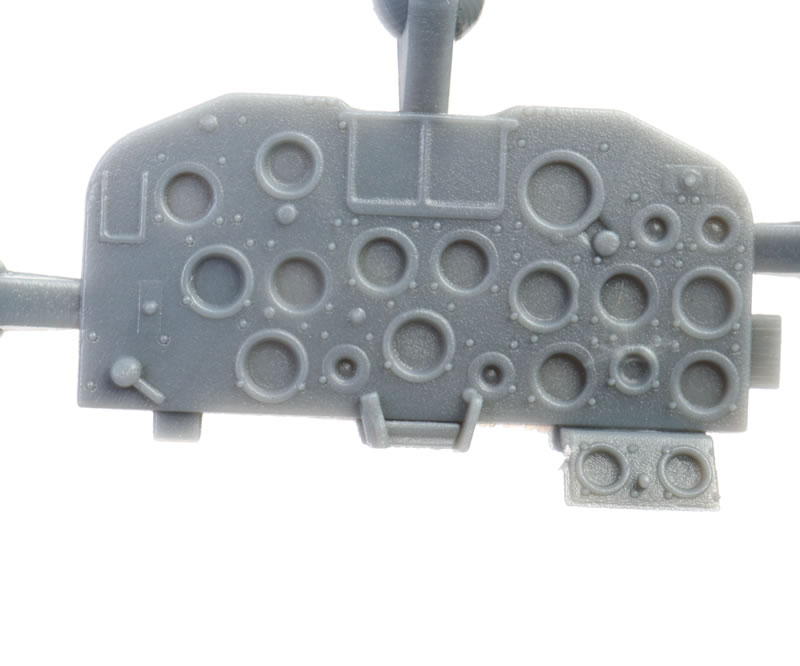
These will improve the appearance until the after-market kicks in with photo-etched, resin and 3d printed accessories.
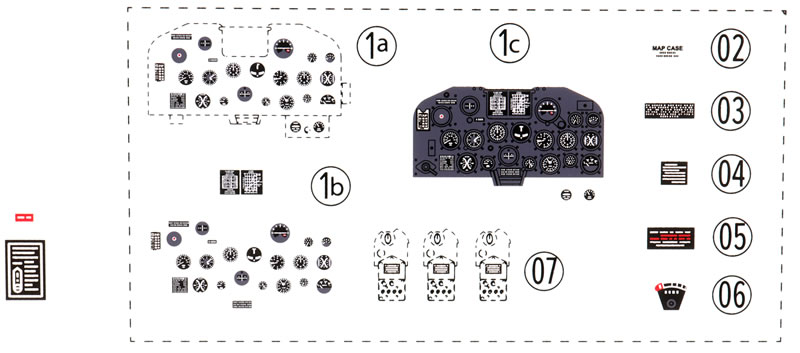
The engine is well done, supported by equally detailed intake ducting, exhaust manifolds and crank case detail.
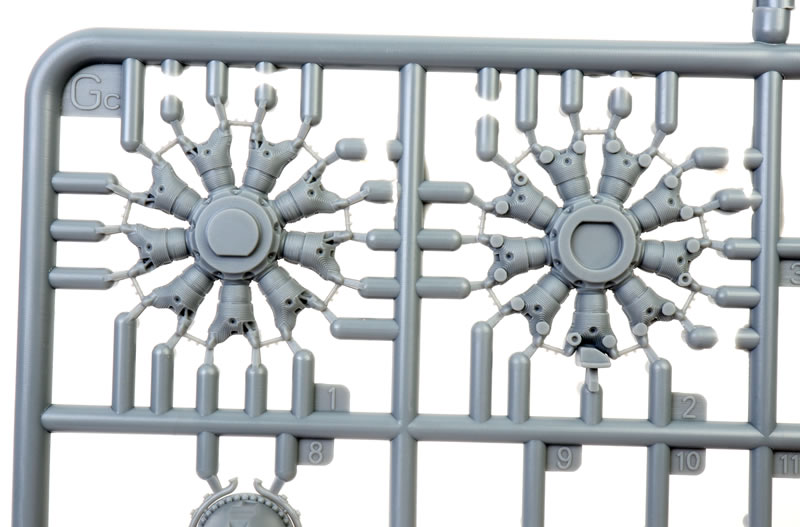
Two sets of cowl flaps are included - open and closed. It's nice to have the option.
The cowl does not seem to have been designed to display open, as the cowl ring is moulded to each separate section of cowling side.
Optional position supercharger vents are also offered.
The wings are broken down conventionally with port and starboard, upper and lower halves. The bottom of the wing has inserts that will allow the landing lights to be repositioned for later P-47 production blocks.
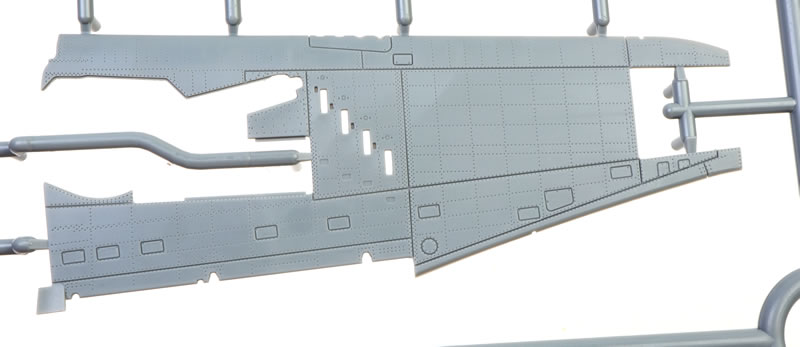
All hatches are sealed shut but the main undercarriage bays look terrific They are made up from nine parts per side and surface texture on the ceilings is very impressive.
The eight .50 cal machine gun barrels are hollowed out at the ends.
Control surfaces are separate but it is not clear whether the flaps may be posed dropped.
Two sets of undercarriage legs are supplied - one set compressed and the other at full stretch.
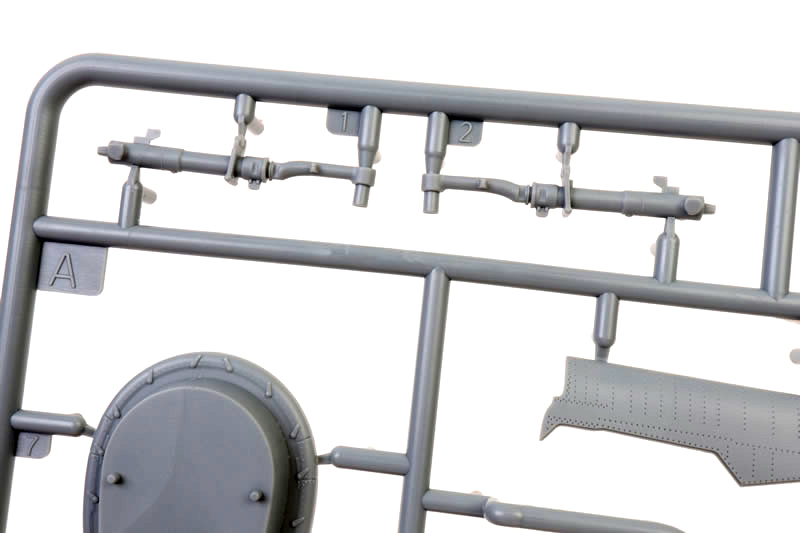
This is a great idea that addresses the age-old argument about whether the undercarriage legs of kit X, Y and Z are too long. The choice is now yours! Alternative oleo scissors are also supplied.
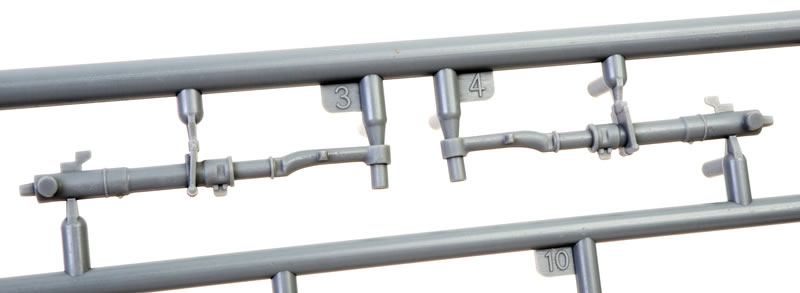
MiniArt has extended this approach to the tyres too. Three sets of wheels and three styles of separate hub are included.
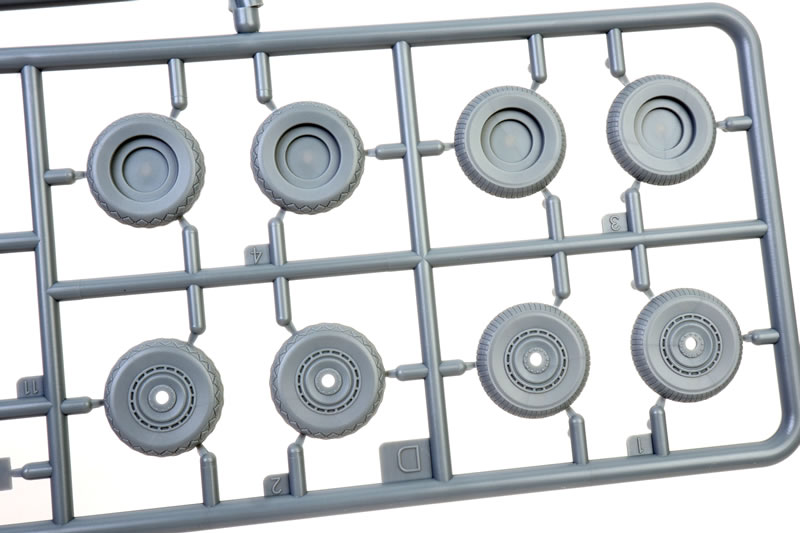
One set of tyres is bulged and flattened, while the other two are not. We are even given the choice of flattened or not for the anti-shimmy tail wheel.
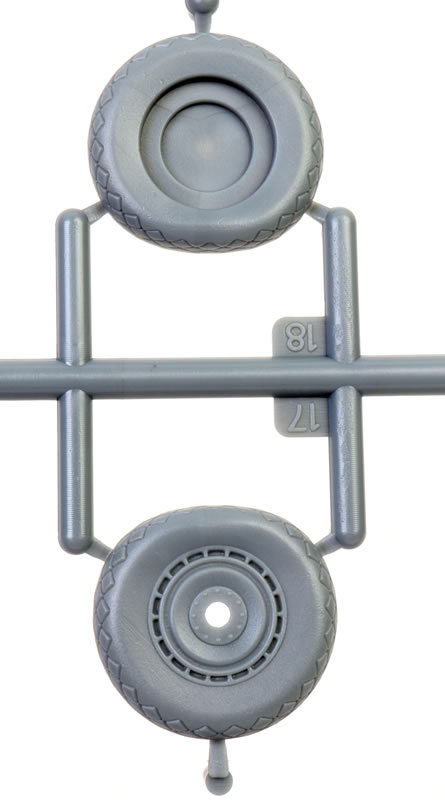
The spine antenna mast is designed to be trapped between the fuselage halves when they are joined. I think this is a recipe for knocking off the mast during subsequent assembly and painting. I think I will cut the mast off the base then drill and pin the separate parts when the model is nearly complete.
A large variety of ordnance options are included:
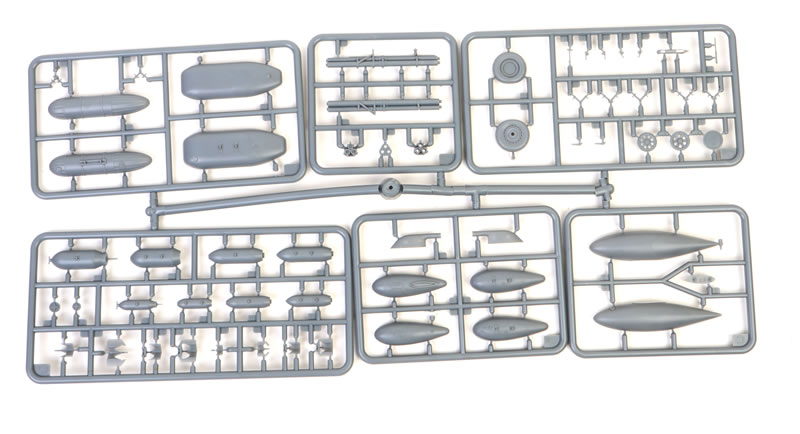
The propeller supplied is the 13' 1+7⁄8" Hamilton Standard. This is correct for the P-47D-25.
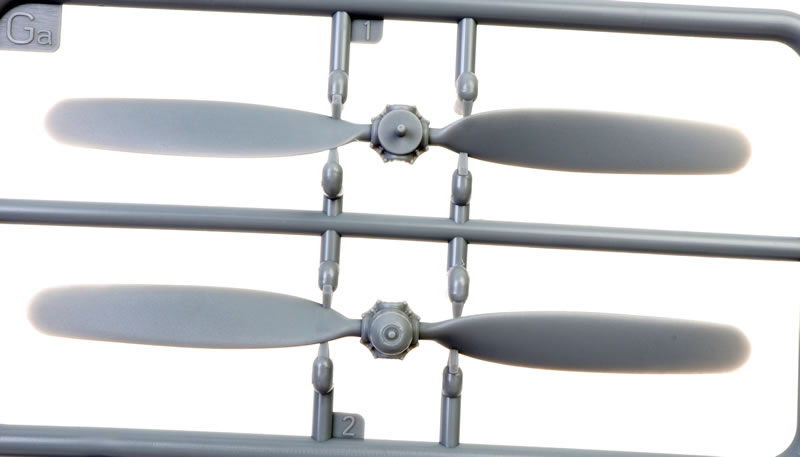
The six clear parts are admirably thin and the large bubble top canopy is completely seamless.
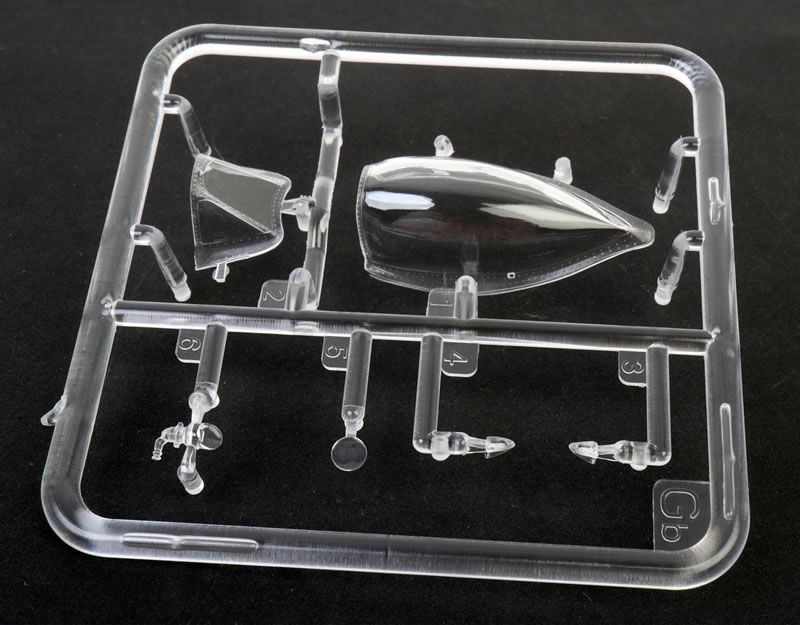
The canopy may be posed open or closed.
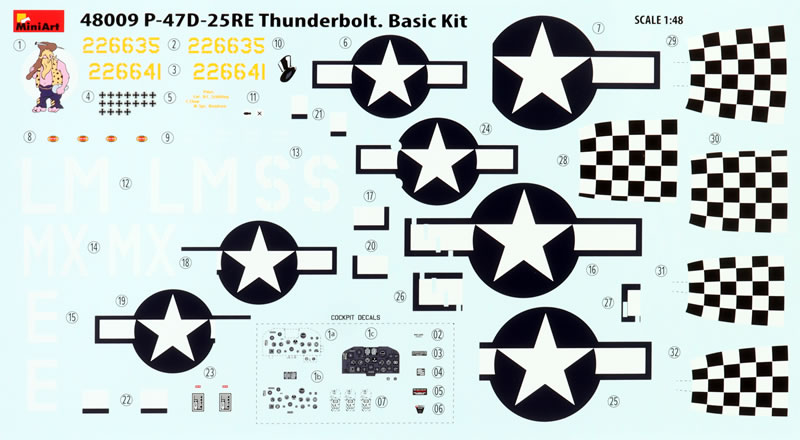
Markings are supplied for two camouflaged subjects.
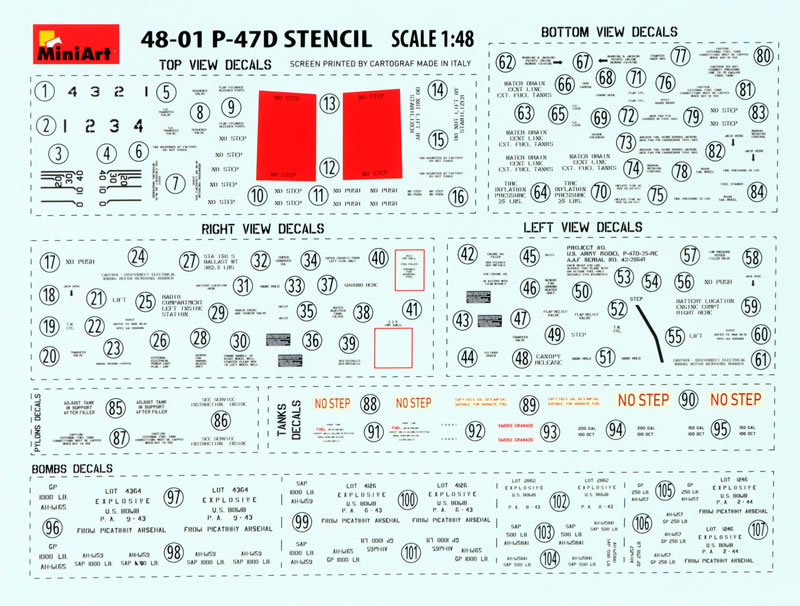
A smaller separate decal sheet provides stencil markings.
MiniArt has made a big splash with their first 1:48 scale aircraft release.
Their P-47D-5-RE is highly detailed, looks accurate, features state-of-the-art surface textures, clever engineering and thoughtful options.
I'm looking forward to seeing where MiniArt goes next!
Purchased by the reviewer from Hannants
Review Text Copyright © 2023 by
Brett Green
Page Created 13 December, 2023
Last updated
22 December, 2023
Back to HyperScale Main Page
Back to Reviews Page |
Home
| What's New |
Features |
Gallery |
Reviews |
Reference |
Forum |
Search